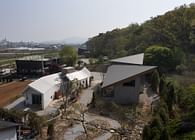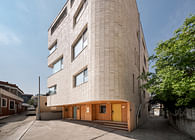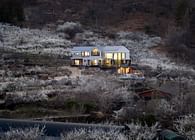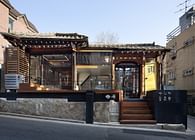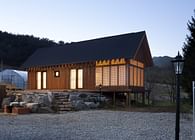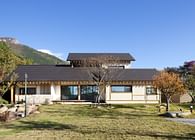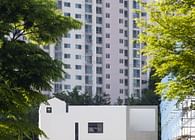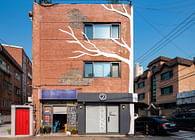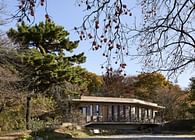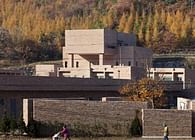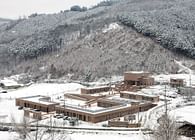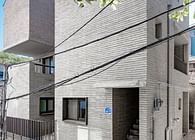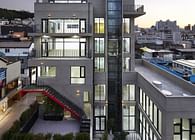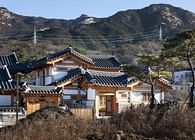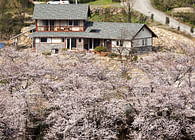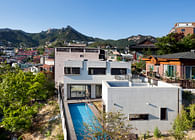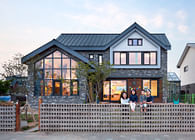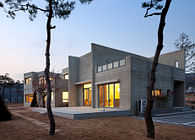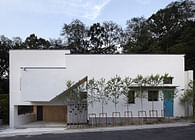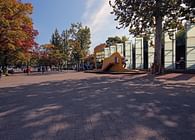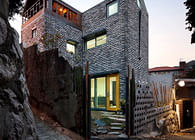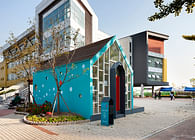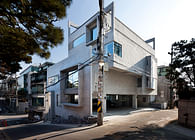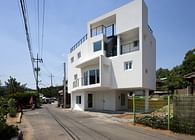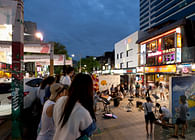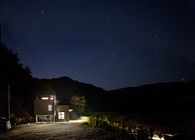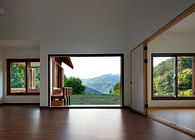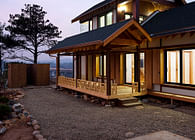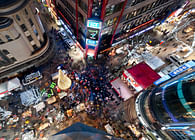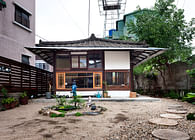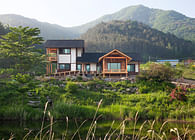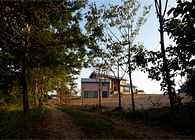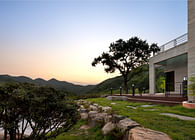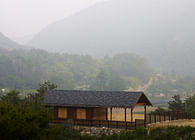
Seoul, KR
Daejeon is a railway hub that connects the south and north, east and west of Korea. If you step out from Daejeon Station towards Donggwang Plaza, you will encounter a surprisingly serene and leisurely scenery. There are empty parking lots and railway-related facilities scattered around, with a road widened to six lanes in advance for the apartment complex that will be built soon. And beyond that, old houses are tightly packed together. At a glance, it looks like a scene from the early 20th century modern era, and one of the reasons is that there used to be a railway official village complex in the japanese occupation period. Japanese-style houses where people who worked in railway-related jobs lived were concentrated in the north and south of Daejeon Station in the 1920s. But as time passed, they have all disappeared, and now only about 40 buildings from the era remain as traces of the east official village.
In a way, Soje-dong is like a blind spot. It is in the middle of Daejeon city, but not many people knew about the district. Even Daejeon citizens who had lived in for a long time were not aware that there was such a neighborhood right next to Daejeon Station. The time of Japanese houses was folded and stored in the drawer of memory.
Building a new building in such neighborhood is very meaningful but also burdensome. The context of time and memory constantly digs into the plan. The site is located on the outskirts where the traces of the old neighborhood remain intact on the side of the big road, acting like the shell of the district. Across the road, a new large residential complex is expected to come in, and behind it is a neighborhood that contains 100 years of historical time, which is a temporal and geographical boundary point.
Due to the road expansion, the land was divided and the original building demolished, so there was no choice but to build a new building. The size of the site was not very large, and the shape is wide and shallow. The two floors are to be for commercial facilities including the owner’s office, and the third floor for residential. The three-story building is not high, but compared to the overall height of the surroundings, it would be prominent. So the building’s impression was softened with bright colors, and the scale of the building was lowered by various openings and diagonal openings of the stairs.
As a way to preserve the existing urban context, a path leading to the building was created on the front. The external stairs leading to each floor could be put inside or hidden inconspicuously, but they were pulled to the front of the building so that users could enjoy the surrounding scenery every time they went up and down. The stairs dig into the side of the building, not only for the purpose of simple movement, but also as an important design element that affects the facade. As users climb the outdoor stairs that bring vitality to the building, they continue to encounter different directions of scenery, and the neighborhood where the past and present are mixed is contained in each line of sight.
On the left side, there is a staircase that wraps around the building, and on the right side facing Daejeon Station, there is a small balcony protruding. The stairs allow a moving, dynamic view, and the balcony a stationary view. By putting a plain white building in the colorless neighborhood, an image of contrast between the past and the present has been created.
Before the japanese village was built in Soje-dong, there used to be a lake called ‘Soje-ho (蘇堤湖)’ and a mountain called ‘Solang-san (率朗山)’. We have named the building, which connects the past memories and the present time, and will observe the changes of the city, ‘Soje-solang’.
Location : 86, Donggwangjang-ro, Dong-gu, Daejeon, Republic of Korea
Use : Commercial Facilities
Site Area : 130㎡
Building Area : 73.53㎡
Gross Floor Area : 189.77㎡
Building Scope : 3F
Status: Built
Location: Daejeon, KR
Firm Role: architect
Additional Credits: Architect : Hyoungnam Lim, Eunjoo Roh in studio_GAON
Project Team : Sungpil Lee, Seongwon Son
Photographs : Youngchae Park
Construction : Geum Gang Construction Co., LTD

